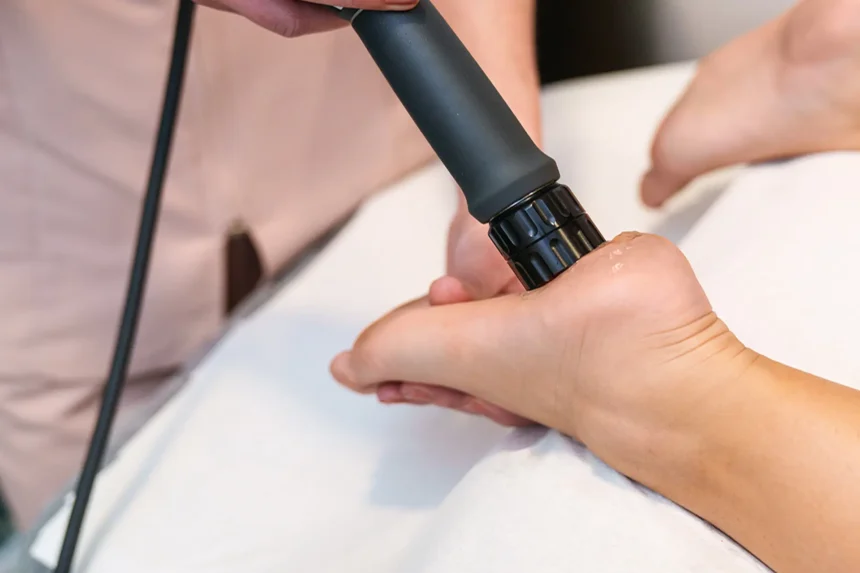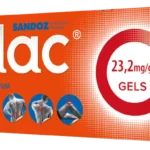Introduction to Shock Therapy for Feet
Foot pain is a common complaint that affects millions of people worldwide, impacting daily activities, work productivity, and overall quality of life. From plantar fasciitis and Achilles tendinitis to nerve entrapments and chronic heel pain, various conditions can cause discomfort and restrict mobility. Over the years, medical science has explored numerous treatment options, ranging from conservative therapies like physical therapy and orthotics to invasive procedures such as surgery. Recently, a novel and promising approach known as “shock therapy for Feet” has garnered attention for its potential to alleviate persistent foot pain effectively. This article delves into the concept of shock therapy for feet, exploring its mechanisms, benefits, applications, and future prospects.
Understanding Shock Therapy for Feet
Shock therapy for Feet, in the context of medical treatment, generally refers to the use of high-energy sound waves or mechanical vibrations to stimulate healing and reduce pain. The most widely recognized form is Extracorporeal Shock Wave Therapy (ESWT), a non-invasive procedure that employs focused acoustic waves directed at affected tissues. Originally developed in the 1980s to fragment kidney stones (lithotripsy), ESWT has since been adapted for musculoskeletal disorders, including those affecting the feet.
How Does Shock Therapy for Feet Work?
The core principle behind shock therapy for Feet involves delivering controlled acoustic waves to targeted tissues. These shock waves induce a series of biological responses that promote healing and pain relief. The mechanisms include:
- Stimulating Blood Flow: Shock waves encourage neovascularization, the formation of new blood vessels, which enhances blood supply to damaged tissues, facilitating repair and reducing ischemia-related pain.
- Breaking down Calcifications: In cases where calcified deposits contribute to foot pain, such as heel spurs, shock waves can fragment these deposits, making them easier to resorb.
- Promoting Cellular Repair: The mechanical stress from shock waves stimulates cellular activity, increasing the production of growth factors like vascular endothelial growth factor (VEGF) and transforming growth factor-beta (TGF-β), which are crucial for tissue regeneration.
- Disrupting Pain Signals: The therapy may alter nerve conduction and reduce the perception of pain by modulating nerve activity.
Types of Shock Wave Therapy
There are mainly two types of shock wave devices used in foot therapy:
- Focused Shock Wave Therapy: Produces high-energy shock waves that converge on a specific point within tissues, suitable for deeper structures.
- Radial Shock Wave Therapy: Generates lower-energy waves dispersed over a broader area, ideal for superficial tissues.
The choice depends on the nature and location of the foot condition being treated.
Conditions Treated with Shock Therapy for Feet
Shock therapy for Feet has shown efficacy in managing various foot conditions, particularly those resistant to conservative treatments. Some common indications include:
- Plantar Fasciitis: The most common cause of heel pain, characterized by inflammation of the plantar fascia. Shock therapy for Feet can reduce inflammation and promote tissue healing.
- Achilles Tendinopathy: Chronic Achilles tendon pain and degeneration respond well to shock waves that stimulate tendon repair.
- Heel Spurs and Calcifications: Shock therapy for Feet can fragment calcified deposits, alleviating associated pain.
- Metatarsalgia and Morton’s Neuroma: While less common, some studies suggest benefits in pain reduction through neuromodulation.
- Stress Fractures and Soft Tissue Injuries: To promote healing in specific cases.
Advantages of Shock Therapy
Compared to traditional treatments, shock therapy for Feet offers several benefits:
- Minimally Invasive: No surgical incisions or anesthesia required.
- Low Risk of Complications: Side effects are minimal, typically limited to transient soreness, swelling, or bruising.
- Quick Procedure: Sessions usually last 15-20 minutes, with minimal downtime.
- Potential for Long-Lasting Relief: Many patients experience sustained pain relief after a series of treatments.
- Reduces Need for Medications: Especially opioids or corticosteroids, which carry side effects.
The Procedure: What to Expect
A typical shock therapy for Feet session involves the following steps:
- Assessment: The clinician evaluates the foot condition through physical examination and imaging, such as ultrasound or X-ray.
- Preparation: The affected area is cleaned, and a coupling gel is applied to facilitate transmission of shock waves.
- Application: The device delivers focused or radial shock waves to the targeted tissue, often in multiple sessions spaced over weeks.
- Post-Treatment: Patients may experience mild soreness or swelling temporarily. Rest and gentle stretching are often recommended.
Effectiveness and Evidence
Numerous clinical studies support the efficacy of shock therapy for Feet conditions, particularly plantar fasciitis. A meta-analysis published in the Journal of Orthopaedic Surgery and Research concluded that ESWT provides significant pain reduction and functional improvement compared to placebo or conservative treatments. The success rate varies, with approximately 65-80% of patients reporting substantial relief after completing recommended treatment sessions.
However, it is important to recognize that results can depend on factors such as the severity of the condition, duration of symptoms, and patient compliance. Not all patients respond equally, and some may require adjunct therapies or alternative interventions.
Limitations and Considerations
While shock therapy for Feet is generally safe, certain considerations are essential:
- Not Suitable for Everyone: Pregnant women, individuals with bleeding disorders, or those with pacemakers should consult healthcare providers before undergoing the procedure.
- Multiple Sessions Needed: Typically, 3-5 sessions are recommended, spaced weekly.
- Variable Response: Some patients may need additional treatments or alternative approaches, including injections or surgery.
- Cost and Accessibility: Depending on healthcare coverage, shock therapy for Feet may be costly or unavailable in some regions.
Future Directions and Innovations
Research continues to refine shock therapy for Feet techniques, optimize treatment protocols, and expand indications. Emerging developments include:
- Low-Intensity Shock Wave Therapy: Aimed at reducing discomfort during treatment while maintaining efficacy.
- Combination Therapies: Using shock waves alongside platelet-rich plasma (PRP) injections or physical therapy for enhanced outcomes.
- Personalized Treatment Plans: Tailoring energy levels and session frequency based on individual patient profiles.
- Portable Devices: Development of home-use shock wave devices, increasing accessibility and convenience.
Conclusion
Shock therapy for Feet represents a promising frontier in the management of chronic foot pain, offering a minimally invasive, effective alternative to traditional treatments. Its ability to stimulate natural healing processes, reduce inflammation, and improve tissue integrity makes it an attractive option for patients suffering from stubborn foot conditions like plantar fasciitis and Achilles tendinopathy. While not a universal solution, ongoing research and technological advancements are likely to expand its role in foot care.
Patients considering shock therapy for Feet should consult qualified healthcare professionals to evaluate their specific condition, discuss potential benefits and risks, and develop a comprehensive treatment plan. As science progresses, shock therapy for Feet may well become a cornerstone in the quest to bring relief to millions grappling with foot pain, restoring mobility and quality of life.
Disclaimer: This article is for informational purposes only and does not substitute professional medical advice. Always consult a healthcare provider for diagnosis and treatment options related to foot pain.





